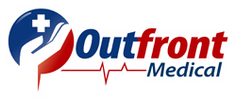Analytical Industries Oxygen Sensors and Analyzers: Essential Tools for Accurate Patient Monitoring
Jun 25th 2025
Analytical Industires Oxygen Sensors and Analyzers: Essential Tools for Accurate Patient Monitoring
In critical care and respiratory therapy, precision is everything. Oxygen sensors and analyzers play a vital role in ensuring accurate oxygen delivery to patients—whether they’re on a ventilator, undergoing anesthesia, or receiving oxygen therapy. At Outfront Medical, we recognize the importance of reliable, calibrated oxygen monitoring devices. That’s why we offer high-quality, oxygen sensors and analyzers that meet the demands of modern clinical environments.
Why Oxygen Monitoring Matters
Oxygen is life-sustaining, but both hypoxia (too little oxygen) and hyperoxia (too much oxygen) can be harmful. Clinicians rely on oxygen analyzers and sensors to deliver the right concentration of oxygen, especially for patients in intensive care units, emergency rooms, neonatal care, or during surgery.
Key clinical uses include:
- Verifying FiO₂ (fraction of inspired oxygen) in ventilators and anesthesia machines
- Monitoring oxygen purity in concentrators and pipelines
- Ensuring compliance with safety and clinical standards
- Assisting in calibration and performance checks for respiratory equipment
Types of Oxygen Sensors and Analyzers
Oxygen sensors and analyzers vary by design and function:
- Galvanic Oxygen Sensors – Common in ventilators, these sensors provide real-time FiO₂ readings and are known for their reliability.
- Paramagnetic Oxygen Analyzers – Known for their precision and long life, often used in anesthesia machines and critical care.
- Electrochemical Sensors – Compact, portable, and typically used in handheld analyzers or spot-check devices.
- Zirconia Oxygen Sensors – High-accuracy sensors often found in lab or high-performance applications.
Applications in Simulation Labs and Teaching Hospitals
For nursing schools, respiratory therapy programs, and medical training labs, oxygen sensors and analyzers are key teaching tools. This equipment allows students to gain hands-on experience with real-world devices, preparing them for clinical settings while saving institutions thousands of dollars annually.
Conclusion:
Whether you’re managing a hospital’s biomedical equipment pool or setting up a simulation lab, oxygen sensors and analyzers are mission-critical tools that must be accurate and reliable. At Outfront Medical, we’re proud to offer high-performance options that support clinical excellence and budget efficiency.
Need a replacement sensor or analyzer?
Contact us today for availability and pricing.
